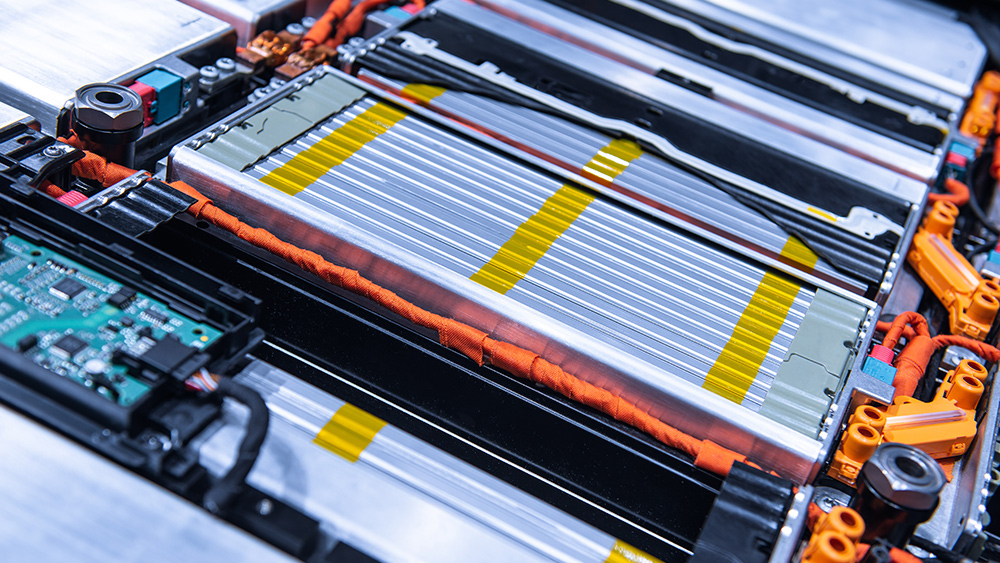This fascinating off-grid lamp is powered by photosynthesis
07/06/2021 / By Divina Ramirez

Dutch designer Ermi van Oers has created an off-grid lamp that uses a living plant to produce light. The device, dubbed “Living Light,” uses microorganisms of plant origin to convert the chemical energy that a plant naturally produces during photosynthesis into an electric current.
The lamp is fully self-sufficient, meaning it doesn’t have to be plugged into an electrical socket to work.
Van Oers plans to scale up the technology to power entire cities. She has already begun to apply the technology to public spaces. She is currently collaborating with local officials in the municipality of Rotterdam in the Netherlands to light up one of its parks using the new technology.
“The potential is huge,” Van Oers told London-based architecture and design publication Dezeen. “Street lights could be connected to trees. Forests could become power plants. Rice fields in Indonesia could produce food and electricity for the local population.”
Van Oers first developed the technology with Dutch research group Plant-e in 2016.
Self-sufficient lamp uses plants to produce light
The Living Light encases a plant inside a glass tube. As that plant photosynthesizes, it releases many organic compounds into a soil chamber below. The compounds are broken down by bacteria fostered through a microbial fuel cell, a system that’s designed to mimic the bacterial interactions found in nature.
Electrons are made when bacteria break down organic matter. Those electrons are then transported away from the soil, passed along a wire and fed into a ring fitted with light-emitting diodes (LEDs). The LEDs light up when a user touches the plant’s leaves.
According to Van Oers, future cities could be powered exclusively by plants by replacing the electric grid with a more sustainable microbial energy system. “I hope we come to a point where every plant pot is provided with this technology,” she told Dezeen. “[We] don’t know any better than that plants are part of our energy system.”
Through inventions like Living Light, nature could get a higher economical value, added Van Oers. In addition, humans could start making more green places so that biodiversity can flourish. (Related: Higher plant biodiversity may help discourage the use of pesticides, reveals study.)
However, Van Oers acknowledged that the technology is still new. The device can only produce a small amount of energy in its current form because, although the plant constantly photosynthesizes, the lamp itself takes a day to produce enough energy for a half-hour charge. This can also vary depending on the plant’s health.
DNA from bioluminescent mushrooms allows plants to glow
The Living Light isn’t scientists’ first attempt at producing light using only plants. A study published in Nature Biotechnology last April showed that deoxyribonucleic acid (DNA) from bioluminescent mushrooms can be extracted and inserted into other plant species to make them glow green light.
In the study, scientists extracted DNA from bioluminescent mushrooms and inserted them into tobacco plants. The modified tobacco plants continuously emitted green light from their roots, stems, flowers, and leaves, throughout all stages of their growth.
The mushrooms glow because of a molecule called caffeic acid, which can be found in lignin. Lignin helps form key structural materials in the support tissues of plants. It is especially important in the formation of cell walls, particularly in wood and bark.
However, even though plants contain caffeic acid, it is not enough to make them glow. In bioluminescent mushrooms, a pair of enzymes convert caffeic acid into a luminescent molecule called luciferin, which is oxidized by a third enzyme to produce a light particle.
Light Bio, a biotechnology company, has partnered with Russian company Planta to commercialize the technology. The two plan to offer a wide range of glowing houseplants eventually.
Go to FutureScienceNews.com for more articles about sustainable inventions.
Sources include:
Tagged Under: biotechnology, breakthrough, discoveries, Ecology, environment, green living, innovations, inventions, off grid, off-grid lamp, Plants, renewable energy, research, sustainable living
RECENT NEWS & ARTICLES
COPYRIGHT © 2017 INVENTIONS NEWS





















